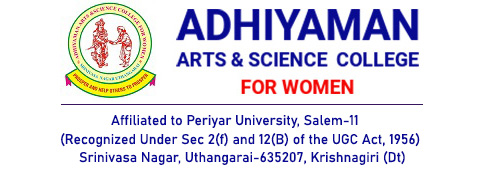Make it easy for Google to know WHO wrote a particular piece of content. In fact, Google employs thousands of “Quality Raters” to measure how well the search results satisfy search intent. If you want to rank for a keyword, you need to use that keyword on your page. But if it regurgitates information that’s already out there, it’s probably not going to rank well. Second, organizing your content into sections helps Google understand what your content is all about. To get an idea of which topics most appeal to your site visitors, use a tool like MonsterInsights, the best Google Analytics WordPress plugin.
By including the NAP details above the fold, businesses ensure that visitors can quickly identify key information about their establishment. This not only improves user experience and trust but also aligns with local SEO best practices, as search engines can easily recognize and verify the business’s location information. Remember to keep this information consistent across your website and other online listings to build trust and credibility with both users and search engines. The key to capitalizing on citation signals lies in their consistency and accuracy. It’s not just about the quantity of citations but also the quality.
Use Contextual Links
If your page appears in the search results yet has a low CTR, you may be missing out on potential visitors. However, some pages—like a contact page—might naturally show higher bounce rates. Bounce rate tracks the percentage of visitors who leave a page immediately without engaging further. A single reliable link from a respected site can outweigh many links from less credible sources. If your CPA is too high, you are spending too much time or money on each new customer, and it might be wise to rethink your approach or focus on a more profitable segment. Every conversation about performance eventually circles back to KPIs (Key Performance Indicators).
Effective SEO marketing strategies enhance user experience, build brand credibility, and can significantly reduce customer https://seo-anomaly-genesis.online/poland/seo-anomaly-pl-48/ acquisition costs. In a crowded online marketplace, SEO is not just a marketing tactic; it’s an important investment in building a sustainable online presence and staying competitive. Now we know a bit more about Google local ranking factors, it’s time to get to work on improving your business’ local search engine rankings.
Using Google Search Console for Insights on Search Engine Traffic
- On-page SEO focuses on optimizing individual pages to improve search visibility and user experience.
- Google’s bots are analyzing your website and look for duplicate content.
- The “regular” organic search results are the “ten blue links” that we’re all familiar with.
- This not only improves user experience and trust but also aligns with local SEO best practices, as search engines can easily recognize and verify the business’s location information.
- This means that your site’s mobile performance directly influences its visibility in search results, making mobile optimization an essential component of your SEO strategy .
- When Google finds multiple consistent references to a business’s name, location, and phone number it strengthens Google’s “trust” in the validity of that data.
Once you’ve ensured your site is optimized for crawlability, the next order of business is to make sure it can be indexed. You also have the option of 302 redirecting a page, but this should be reserved for temporary moves and in cases where passing link equity isn’t as big of a concern. You’re temporarily siphoning traffic through a https://seo-anomaly-vision.online/poland/seo-anomaly-pl-39/ certain route, but it won’t be like that forever. Say you move a page from example.com/young-dogs/ to example.com/puppies/.
Reviews
Social sharing and backlinks not only increase your site’s reach and visibility but also contribute to your site’s SEO profile by driving more traffic and improving domain authority. The term “Ranking Factors” describes the criteria applied by search engines when evaluating web pages in order to compile the rankings of their search results. Ranking factors can relate to a website’s content, technical implementation, user signals, backlink profile or any other features the search engine considers relevant. Understanding ranking factors is a prerequisite for effective search engine optimization. Overlooking User Experience (UX) The user experience is a growing factor in SEO, and ignoring it can lower your SEO ranking. Google and other search engines evaluate metrics like bounce rate, dwell time, and page speed to gauge how well users engage with your site.
Popular content management systems (CMS), like WordPress, provide a blank space for you to add alt text. The CMS then automatically adds the required HTML to that alt text. Search engines still include your URLs in your overall score – they just don’t hold the same prominence they once did. Once again, we have an excellent resource for more in-depth information on HTML https://seo-anomaly-insight.online/poland/seo-anomaly-pl-31/ image optimization. We discussed the importance of visual on-page assets on your page, now it’s time to examine their technical aspects more closely.
On-page SEO refers to optimizing individual web pages to improve their ranking in search engine results and attract more relevant traffic. To excel in voice search optimization, it’s crucial to understand the intent behind voice searches and to provide clear, concise, and direct answers to those queries. This might involve creating FAQ pages, optimizing for featured snippets, or using schema markup to highlight relevant information. Core Web Vitals have emerged as a pivotal set of https://seo-anomaly-technical.online/poland/seo-anomaly-pl-60/ metrics for evaluating a website’s overall user experience, directly influencing its SEO ranking. These vitals measure the speed, responsiveness, and visual stability of a page, providing a quantifiable gauge of the user experience.
In the realm of SEO, content does more than just fill your web pages—it engages your audience, answers their questions, and solves their problems. When search engines like Google decide which pages to rank highest for a given query, one of the primary factors they consider is the quality and relevance of the content. Link building is a powerful strategy within SEO that requires creativity, persistence, and a focus on building genuine relationships and high-quality content. By employing the strategies https://seo-anomaly-spark.online/germany/seo-anomaly-de-20/ outlined above, you can enhance your site’s authority, improve its search engine ranking, and drive targeted traffic to your website.
Ensure your business is listed in local directories and that your citations are consistent across the web. Monitor your backlink profile to identify opportunities for improvement and keep your site’s performance on the rise. Focus on building quality backlinks from credible sites to boost your domain authority. Engage in link-building strategies such as guest blogging and collaborating with industry influencers.






